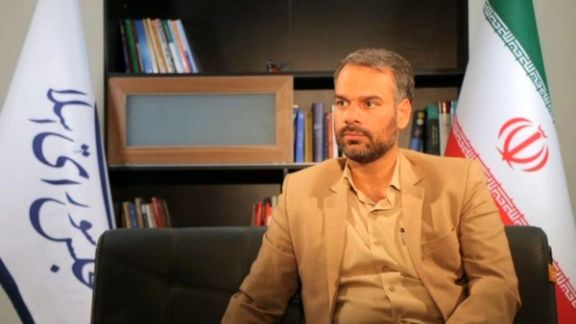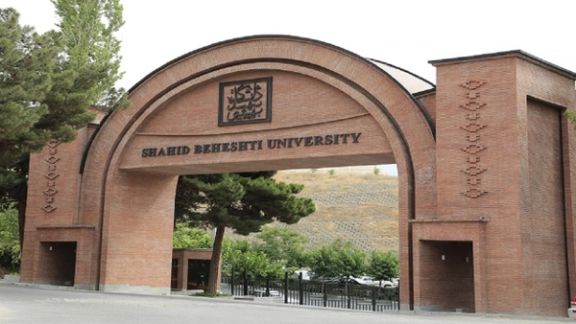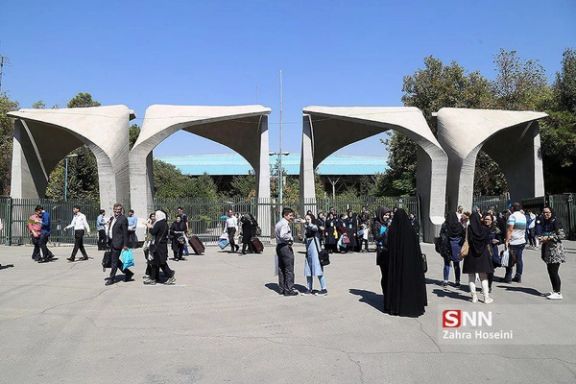Internet Bans Cost Iranians $400 Million Annually

An Iranian MP has estimated that the annual financial turnover of Virtual Private Networks (VPNs) in Iran is approximately $900 million amid widespread internet bans.

An Iranian MP has estimated that the annual financial turnover of Virtual Private Networks (VPNs) in Iran is approximately $900 million amid widespread internet bans.
The revelation stems from a survey conducted by MP Jalal Rashidi Kouchi who calculated that if the minimum monthly price of a VPN in Iran is $2, citizens would be compelled to spend around $480 million annually on these tools to circumvent regime bans on the likes of Instagram and Whatsapp.
He also estimated that the shutdowns on popular apps used for social networking and e-commerce cost the public an additional $400 million.
In September, Yekta Net Advertising Company published a report estimating the market volume of circumvention tools in 2022 to be between $500 million to $600 million. According to the report, 80% of Iranians use VPNs to access social networks, while the Islamic Republic currently restricts access to major international social networks and messaging platforms.
Estimations of VPN sales in Iran in recent years have been approximations due to a lack of transparent data. The estimates typically focus on the direct costs citizens pay to bypass censorship, overlooking government expenses in equipping and maintaining the online censorship system.
Despite the controversies, officials from the Ministry of Communications and Information Technology, including Minister Isa Zarepour, have consistently rejected published statistics on the matter, avoiding responsibility.
According to Freedom House, Iran was the Middle East's worst country for internet freedom in 2023, its rating worsening in the wake of the Women, Life, Freedom uprising.

University security guards targeted women at Shahid Beheshti University in Tehran as crackdowns on hijab laws worsen.
Several students in the psychology faculty were first targeted before the security team reached humanities and literature students. ID cards were recorded as the regime does all it can to threaten and intimidate those not complying with compulsory hijab laws.
Other measures have been imposed on students including forcing them to agree to wearing the hijab in order to choose courses, with some students even exiled to other cities.
It comes amidst heightened crackdowns across the country where students have been a pivotal part of the Women, Life, Freedom movement challenging the Islamic Republic. Over 140 universities across Iran witnessed protests following the death in morality police custody of Mahsa Amini. Since that time, hundreds of students have been arrested and banned from studies as a consequence of support for anti-regime protests.
In April, Iran’s Student Union Council claimed that more than 430 students had been suspended or expelled following the recent protests across the country.At the time, US-based Human Rights Activists News Agency (HRANA) said 637 students from 144 universities had been arrested since mid-September. Other sources have put the number at well over 700.
The regime continues to make universities a focal point. On Monday, Mohammad Moghimi, president of the University of Tehran, admitted an increased presence of hijab enforcers on the capital's campus. He mentioned that women, educated in seminaries, have formed monitoring groups dedicated to overseeing students' compliance with hijab regulations.
Student councils further disclosed that over the past week, more than 50 students were summoned to disciplinary committees by the hijab enforcement teams. The penalties ranged from verbal reprimands to suspension from their studies.

US Department of Defense chiefs are frustrated by their government’s lack of action in dealing with Iran-backed attacks on US facilities across the region.
Iran-backed militias have been targeting American forces almost daily for over a month, totalling 61 attacks in which at least 59 staff have been wounded. They say their operations are in support of Palestinians and will continue as long as the United States backs the Israeli onslaught on Gaza.
In response, the Biden administration has so far approved three airstrikes on IRGC-affiliated facilities in Syria, the last of which on 12 November killed “seven militants”, according to US officials.
“Are we trying to deter future Iranian attacks like this,” a Pentagon official told the Washington Post on the condition of anonymity. “There’s no clear definition of what we are trying to deter.”
As Iran uses the war in Gaza to fuel its proxies' actions against its archenemies Israel and the US, regime rhetoric is relishing the opportunity posed by the Hamas invasion of Israel on October 7. Thousands of terrorists invaded Israel killing at least 1,200 mostly civilians in the single most deadly day for Jews since the Holocaust. While Iran denies involvement, it funds the group tens of millions each year and supports it militarily.

“We have seen the first stage of expansion of the scope of the war by the resistance groups who make their own decisions,” said Iranian Foreign Minister Hossein Amir-Abdollahian Monday, distancing himself from the proxy attacks on Israel and the US which have come from Yemen, Iraq, Lebanon and Syria.
“And if the possible scenarios to stop the crimes of the Zionists do not come to fruition, we will probably witness a new situation in the region,” he warned. On Sunday, Iran's Yemeni proxy, the Houthis, admitted hijacking what it had believed to be an Israeli-owned ship while on Monday, the situation on Israel's northern border had escalated under its proxy Hezbollah.
The Biden administration is mindful of not escalating the conflict and turning it into a full-scale regional war that would inexorably drag in American troops. They have warned Iran and its proxies many times that the United States will not tolerate attacks on its forces and would retaliate. Warships and troops have also been brought to the region to deter further aggression, yet the attacks are continuing unabated.
However, if the attacks on US bases carry on at the current rate, it is only a matter of time before US military personnel get killed, forcing the administration to react.
Some in Washington say Biden's softly-softly approach has emboldened the regime, not least since the recent hostage deal which saw five unlawfully detained US-Iranians released in exchange for the freeing up of $6bn of frozen Iranian funds in south Korea and a possible $10bn more in the offing.
Many attacks on US troops are carried out by one-way drones, which Iran manufactures on a large scale, even giving them to Russia to be used in its war against Ukraine.
“They keep shooting, waiting for us to respond. We don’t, so they keep shooting,” said Senator Kevin Cramer of the Armed Services Committee. “Our posture has to be a little more aggressive than just strictly defensive, because one of these days, we’re going to miss one of those drones.”

In the midst of challenges posed by millions of Afghan immigrants residing in Iran, the Afghan embassy has sought assistance from Iran to improve their living conditions.
During a recent meeting with Abdul Basit Emami, the Acting Head of Migrant Affairs at the Afghan Embassy in Tehran, Taliban officials expressed concerns about Iranian policies. They raised issues regarding restrictions imposed on Afghan citizens in certain provinces, highlighting the prohibition of employment opportunities, such as roles as sellers or apprentices.
Mohammad Hosseini, the representative of Bushehr in the Supreme Council of Provinces, quoting Solat Mortazavi, the Minister of Labor, emphasized that “five million jobs in Iran are currently monopolized by Afghan citizens,” a point of contention for those who argue Iranians should be employed amidst a national depression.
The figure is particularly significant considering the reported 8.4 million Afghan nationals residing in various provinces. Despite the high unemployment rate in Iran, experts argue that there is no imperative need for foreign labor at the present rate.meanwhile professions such as nursing and teaching remain in dire short supply as Iranians migrant in unprecedented numbers.
In the meeting, Taliban officials underscored the importance of facilitating the issuance of driver's licenses for migrants and establishing a suitable mechanism for legal matters related to property ownership. They urged Iran to prevent the forced expulsion of migrants possessing legal documents and residence permits. However, reports suggest that the number of migrants with legal residence permits in Iran is relatively low.
The Iranian government is currently facing criticism for what some perceive as a lenient approach towards Afghan refugees. Political opponents of the government have repeatedly warned against its "open borders" policy, raising concerns about potential hidden agendas such as rallying more pro-regime support. In response, the government has accused critics of promoting "Afghan-phobia".

The University of Tehran's President Mohammad Moghimi has officially confirmed the increased presence of hijab enforcers at the capital's campus.
He said women, "with seminary education," organized into "monitoring groups for students' hijab" are now on the university campus.
Moghimi disclosed the development during a session of the Council for Promotion of Virtue and Prevention of Vice at the university.
He explained that the groups, comprised of women focused on “improving compliance with behavioral codes, are tasked with monitoring and enhancing the adherence to dress codes in alignment with religious rules, university regulations, and standards across all campuses of the University of Tehran.”
Critics argue that the presence of such groups raises questions about individual freedoms and privacy on university campuses, which have been hotbeds for anti-regime sentiment since last year's Women, Life, Freedom movement saw uprisings swell across the country.
The issues first came to light earlier this month when student councils in the country reported the presence of "hijab enforcement" forces in the University of Tehran's campuses, detailing instances of harassment and intimidation by the forces, who patrol the university campus under the pretext of enforcing dress codes.
Student councils also revealed that within a week, more than 50 students were summoned to disciplinary committees by the hijab enforcement forces. The majority of the students faced a range of penalties, from verbal reprimands to suspension from their studies as has been since since the uprising began last year and hijab crackdowns toughen.

Political activist Abbas Abdi has slammed the recent deployment of police and hijab patrols in Tehran's metro stations, aiming to enforce mandatory hijab regulations.
In a Monday editorial for Etemad newspaper, the reputable reformist commentator and journalist expressed deep concern over the situation, asserting that “the increased police presence in the metro only serves to heighten public discontent.”
In recent months the regime has hardened its stance over the hijab as the strength of rebellion fails to weaken.
Abdi emphasized that the onus is on the government to align itself with the expectations of the people and work towards a more harmonious coexistence. Images circulating on social media depict numerous hijab officers creating congestion in a subway passageway at Tehran's Enghelab station, now colloquially referred to as the "horror tunnel" for women.
Reports also highlight the use of cameras by the Security Police (FARAJA) to identify women without headscarves. Abdi reposted an image of the hijab enforcers on the X social network on Friday, cautioning that the regime would likely face regrettable consequences for its decisions.
The stringent enforcement of hijab rules gained momentum following the tragic death of Iranian-Kurdish woman Mahsa Amini in hijab police custody in September 2022, igniting the Women, Life, Freedom protests. In May, Tehran Mayor Alireza Zakani announced the implementation of a uniformed security unit to prevent women from accessing metro ticket gates.
Reports in August suggested that Tehran municipality was planning to deploy 400 personnel to enforce hijab laws at subway stations in the capital. The heightened presence of hijab police also led to the death of Armita Geravand, 16, who lost her life in October following an encounter with Tehran's hijab police in the subway, in echoes of the Mahsa Amini tragedy one year earlier.